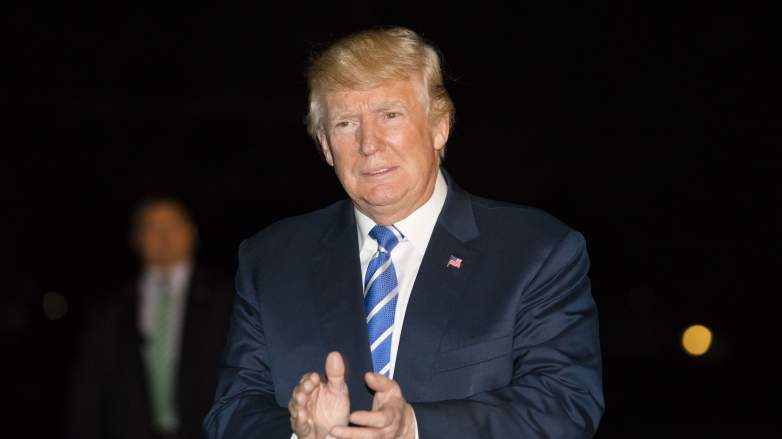President Donald Trump told Americans Monday night that he has new plans for Afghanistan, escalating the longest war in American history, without announcing troop numbers or exact dates. It was only Trump’s second prime-time speech since taking office and first since his February joint-speech before Congress. You can watch a full video replay of the speech above.

GettyPresident Donald Trump on August 20.
The speech also included an acknowledgement of the violence in Charlottesville on August 12, asking Americans to come together to love one another so our soldiers do not return home to find a divided country. “We cannot remain a force for peace in the world if we are not at peace with each other,” Trump said.
The president mentioned his original position on Afghanistan, which was to pull troops out. However, he said that after his research, he decided that a quick withdrawal was a bad idea.
Trump justified his decision to add more troops in Afghanistan by insisting that the U.S. cannot pull out quickly, using the 2011 withdrawal from Iraq. He said that created a power vacuum that ISIS stepped into. Trump notably did not announce the exact number of troops who will be sent to Afghanistan, repeating his campaign promises to not reveal the U.S.’ plans for the enemy to hear.
“A core pillar of our new strategy is a shift from a time-based approach to one based on conditions,” Trump said. “I’ve said many times how counterproductive it is for the United States to announce in advance the dates we intend to begin, or end, military operations. We will not talk about numbers of troops or our plans for further military activities.”
“We are not nation-building again,” Trump said, adding that the Afghans should be able to decide their own future. Trump also criticized Pakistan, where several terrorist groups are based, and pushed India to work with the U.S. more to stabilize Afghanistan.
“Our troops will fight to win,” Trump declared. “From now on, victory will have a clear definition: attacking our enemies, obliterating ISIS, crushing al-Qaeda, preventing the Taliban from taking over the country, and stopping mass terror attacks against Americans before they emerge.”
Prior to the speech at the Army’s Joint Base Myer-Henderson Hall, a senior official told Fox News that Trump plans to send 4,000 additional troops to Afghanistan. Trump is the third president to oversee America’s involvement in Afghanistan, which started after the September 11, 2001 terrorist attacks. After 16 years, the Afghan government only controls about half the country and continues fighting the Taliban.
The speech follows meetings at Camp David over the weekend. “Important day spent at Camp David with our very talented Generals and military leaders. Many decisions made, including on Afghanistan,” Trump tweeted on August 19.
Secretary of Defense James Mattis, a veteran of the Iraq War, told CNN on Sunday that Trump had finalized his plan going forward in Afghanistan, but the president felt it was important to deliver the message directly to the American people. Mattis also said that Afghanistan was just one part of a full “South Asia strategy.”
In June, Trump gave Mattis full authority to send more troops to Afghanistan, showing a clear sign of diverging from President Barack Obama’s strategy. As The New York Times reported in June, Mattis told the Senate Armed Services Committee that the U.S. was “not winning” the war. At the time, there was growing frustration in Washington that Trump still didn’t have a strategy.
“There are actions being taken to make certain that we don’t pay a price for the delay,” Mattis told the Senate committee.
In February, General John W. Nicholson, the leader of U.S.-led forces in Afghanistan, also painted a bleak picture of the war in testimony before the same Senate committee. He said the war is in a “stalemate” and said he needed a “few thousand” more troops.
There are around 8,400 U.S. troops now serving in Afghanistan. In addition to taking part in counter-terrorism operations against ISIS and al Qaeda, the troops also train Afghan forces. Since 2010, 2,403 American soldiers have died, with 2010 being the worst year. That year, 499 U.S. soldiers and 711 total coalition forces were killed.
According to the Iraq Coalition Casualty Count, 11 U.S. soldiers have died in Afghanistan since the start of 2017, compared to 14 in all of 2016. Since the Iraq War began in 2003, 4,523 U.S. soldiers have died.